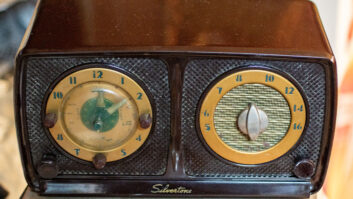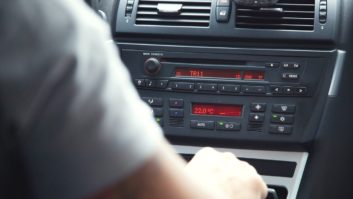OUAGADOUGOU, Burkina Faso — A health information campaign broadcast on seven radio stations in Burkina Faso between 2012–2015 helped to reduce child mortality due to diarrhea, malaria or pneumonia in areas where it was broadcast — compared to areas that did not receive this information — and did so at a low cost per person affected.

This is the conclusion of two studies into the radio campaign’s effectiveness. One of these studies, entitled “Modeling the effect of a mass radio campaign on child mortality using facility utilization data and the Lives Saved Tool (LiST): findings from a cluster randomized trial in Burkina Faso,” estimated that listener exposure to this health information “resulted in an estimated 7.1 percent average reduction in under-five mortality per year.”
THE STUDY
The Burkina Faso radio campaign involved the broadcast of one-minute radio spots, 10 times per a day, 365 days a year, over three years. It also included longer interactive dramas that were broadcast during two-hour programs broadcast every evening Monday–Friday over the three-year campaign.

The radio content promoted health-enhancing behaviors on the part of parents. This included attending ante-natal (before birth) care clinics, delivering babies in health facilities rather than at home, and promoting primary care consultations for children showing symptoms of malaria, pneumonia and diarrhea; three of the biggest killers of children under five in Burkina Faso.
Now the notion that providing health information via radio can change health-enhancing behaviors among listening audiences isn’t new. But quantifying the difference radio can make through a randomized controlled trial (RCT), which allow changes to confidently be attributed to the campaign, is.
“The purpose of these studies was to test whether mass media can change life-saving behaviors,” said Cathryn Wood, director of Strategy and Development at Development Media International, the London-based non-governmental agency that conducted the Burkino Faso radio campaign and the subsequent studies in collaboration with the London School of Hygiene and Tropical Medicine. “This has never been shown to the highest scientific standards until now.”
Modeling based on the behavioral changes detected by the RCT showed that radio’s impact on primary care consultations for children with symptoms of malaria, diarrhea and pneumonia had a profound impact on child mortality.

“The RCT showed that our radio campaign in Burkina Faso led to significant increases in treatment-seeking behaviors; for example in year one, consultations for malaria went up by 56 percent in intervention zones compared to control zones,” said Wood. “These increases in treatment-seeking behaviors were modeled using LiST and the projections indicated that these behavioral changes saved an estimated 3,000 under-five lives over the three-year campaign.”
EFFECTIVE TOOL
So why was radio an effective way to communicate health information in this African country?
“Radio listenership is high in Burkina Faso, and we broadcast on community radio stations in local languages and with high intensity of broadcasting,” Wood replied. “Radio was a strategically chosen medium; it remains the most popular form of mass media in Burkina Faso, and other methods may rely on literacy (which is low in the communities we were targeting) or French language abilities (which national radio stations tend to broadcast in).”
[South Africa’s CapeTalk at 20 “Punches Over Its Weight”]
The second study used these results to calculate that the cost of saving a child’s life with such a campaign is as low as US$420, making it comparable to the most cost-effective child health interventions available.
“Radio is a highly cost-effective method for changing life-saving behaviors, as many people can be influenced for a relatively low-cost,” Wood concluded. “Finally we have the evidence to show this.”







